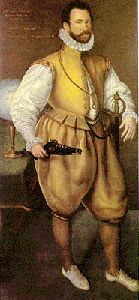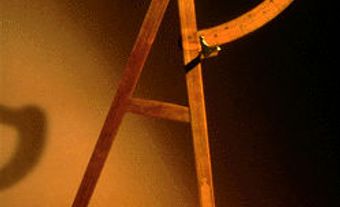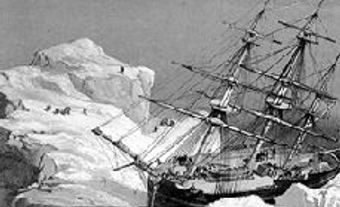
Sir Martin Frobisher, mariner, privateer, explorer (born ca. 1535 near Wakefield, England; died 22 November 1594 in Plymouth, England). Frobisher was an English seaman who completed three voyages to North America, first in search of the Northwest Passage and then mineral treasure. During his first expedition, he became the first European to navigate the waterway now known as Frobisher Bay and returned to England with ore thought to contain gold. He returned to the Arctic twice more, in 1577 and 1578. In 1585, he accompanied Sir Francis Drake to the West Indies, and three years later fought off the Spanish Armada and was knighted for his efforts. In 1594, while storming a Spanish-held fort on the west coast of France, he was mortally wounded.
Early Life and Privateering
Following the death of his mother in 1549, Martin Frobisher lived with his uncle, Sir John York, who was then an officer of the mint. In 1553, he was sent by his uncle to Guinea, on the west coast of Africa, with the Wyndham expedition. Although three-quarters of the expedition’s crew would perish, Frobisher survived. In 1554, Frobisher took part in another trading expedition to Guinea, and he is said to have volunteered as a hostage to ease trade negotiations with an African king. The English fled when Portuguese ships arrived, and Frobisher entered Portuguese captivity. Following his release in 1556 or 1557, Frobisher established a reputation as a fierce privateer, and although he never faced trial, he was arrested at least three times on charges of piracy.
Northwest Passage
Martin Frobisher, like many of his contemporaries, was enamoured with the idea of finding a northwestern route to the Far East by sea. Frobisher campaigned to obtain funding for his expedition and secured financial backing by collaborating with Michael Lok of the Muscovy Company. Frobisher's first expedition left England in June 1576 and probably sighted what is now called Resolution Island (near Labrador) by the end of July. Factors including poor weather would eventually force Frobisher west, but not before he entered the bay that now carries his name (Frobisher Bay) — though he believed it was a strait — on present-day Baffin Island. There, he and his crew met the resident Inuit. Relations soured between the European explorers and Inuit when five of Frobisher’s crew vanished after rowing to shore, apparently being taken captive. Frobisher would never recover the men. He then kidnapped an Inuit man, who had kayaked to the European ship to trade, and brought him back that fall to England, where the captive soon died. Frobisher also brought with him a piece of ore and gave it to Lok, who believed it was valuable; an assayer later claimed that it contained gold.
Second Arctic Voyage
Encouraged by the promise of precious metals, supporters provided the funds necessary to launch a second expedition. Martin Frobisher was appointed high admiral of his fleet and departed with his crew in the late spring of 1577, reaching Baffin Island in mid-July. He had direct orders from his sponsors to temporarily place his search for the Northwest Passage on hold in favour of gathering gold ore. Attempts to find the five men who had disappeared during the previous expedition were unsuccessful. Clashes with the Inuit also occurred, resulting in Inuit casualties. Frobisher and his crew would eventually return to England with about 200 tonnes of what they incorrectly believed to be gold ore, along with three Inuit captives, who soon died.
Third Arctic Voyage
Queen Elizabeth, who herself named the area of land that Martin Frobisher had explored “Meta Incognita,” commissioned a larger expedition based on the prospect of gold. Frobisher was chosen to lead 15 vessels and establish a colony on Baffin Island. The expedition left England in May 1578, arriving at Frobisher's “strait” in July. During the journey, one of his ships sank, while another abandoned the expedition, returning to England. Attempts to start a settlement were given up, and the remaining 13 ships returned to England at the end of August. It was eventually discovered that the ore brought back by Frobisher, weighing about 1,350 tonnes, contained no precious metals.
Military Career and Death
Following the collapse of his reputation as an explorer, Martin Frobisher had to turn to new avenues of employment. In 1578, Frobisher took part in a campaign to quell a rebellion in Ireland and in 1585 he sailed to the West Indies as Sir Francis Drake’s vice admiral. In 1588, Frobisher was a chief commander in the English defence against the Spanish Armada, for which he was knighted. He spent the rest of his life harassing Spanish shipping vessels, eventually receiving a fatal injury while attacking a fortress held by the Spanish on the west coast of France in 1594.

 Share on Facebook
Share on Facebook Share on X
Share on X Share by Email
Share by Email Share on Google Classroom
Share on Google Classroom


